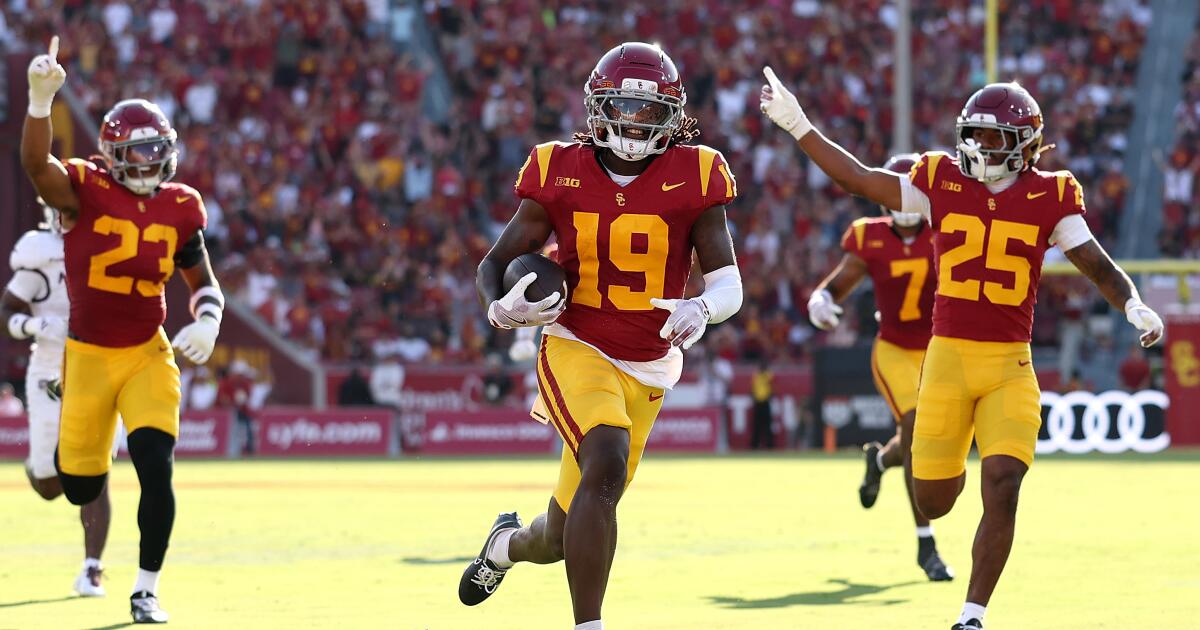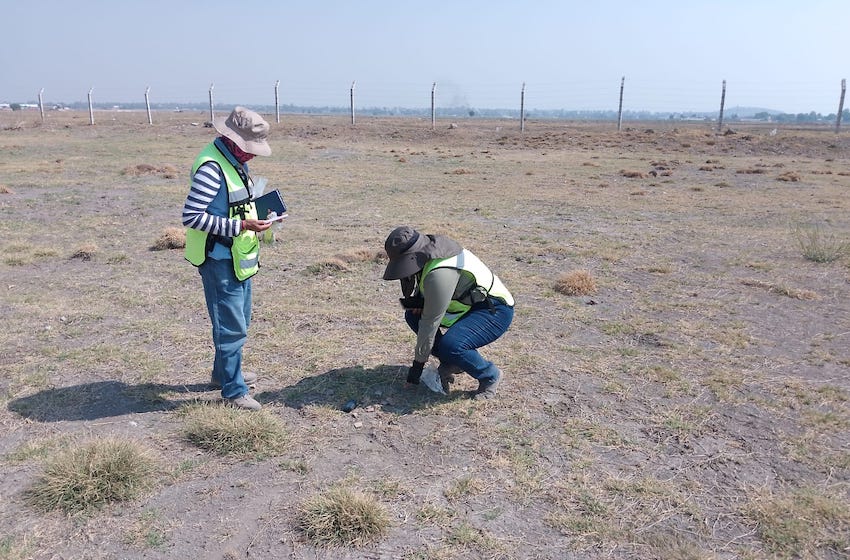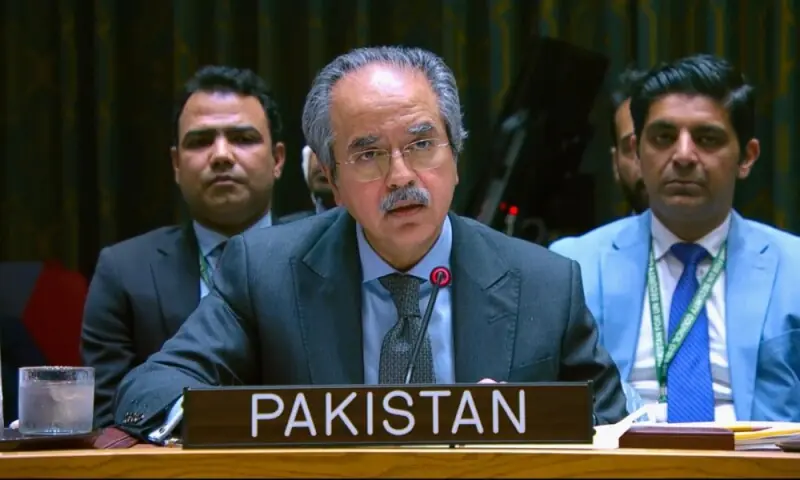
Bishop Fitzgerald stood inside the 5-yard line at Ross-Ade Stadium, watching the eyes of Purdue quarterback Ryan Browne, waiting for the right moment to pounce. It was a critical third down Saturday, midway through the fourth quarter,
during Big Ten road games.
Fortunately, Fitzgerald knew exactly where the play was headed. The USC senior safety recognized it from film clips he studied of Purdue’s red zone offense. He knew not to bite on the play action fake and that the receiver would, in a matter of seconds, cut across the center of the field on his route.
He also knew to be patient, to lure the quarterback into a false sense of security. So when Browne finally did fire his third-down pass over the middle, Fitzgerald was there at just the right moment to snag his second interception of the game.
“I fell back on my training,” Fitzgerald said of the pick, “and I made the play that came to me.”
Arguably no defensive back in college football has made as many plays through three games as Fitzgerald, who leads the nation with three interceptions during that span. Coaches have raved about his instincts and marveled at how quickly he has picked up USC’s defensive scheme.
His high school coach says that’s a testament to his training. Just maybe not the training you’d expect.
“He could have been a college quarterback — and a good one,” says Tony Keiling, Sr., who coached Fitzgerald as a quarterback in youth football and at Gar-Field High School in Woodbridge, Va.
“He could make every throw. He could understand defenses. He could roll out and run. He was dynamic.”
Past experience as a passer isn’t entirely unique on USC’s roster. In fact, it’s become a coveted trait in recent years for coach Lincoln Riley.
“It’s something we’ve always paid attention to,” Riley said. “That’s kind of a feather in anyone’s cap that they’ve been able to run an offense, execute plays, understand and communicate to all 11. You know they’ve had to have some understanding of all 22 and what’s going on on the field to be able to play quarterback, no matter what offense you’re in. So it’s typically a good omen.”
DeCarlos Nicholson, who starts alongside Fitzgerald in USC’s secondary, was a Mississippi state champion quarterback in high school and for one season at Mississippi Gulf Coast Community College before flipping to the defensive backfield. On the other side of the ball, freshman running back Harry Dalton III boasts the most career yards (11,282) and touchdowns (160) of any quarterback to ever come out of Richmond, Virginia.
Fitzgerald may not have been as prolific as that pair. But Keiling, who coached him at quarterback since youth football, is still convinced that Fitzgerald could have continued at the position, if not for the unfortunate timing of the pandemic.
When Fitzgerald took over as Gar-Field’s quarterback as a sophomore, the team was coming off an 0-10 season. By his senior year, Fitzgerald led the Indians to a district title, the school’s first since 1994. He played almost every snap in the process, starting both under center and at safety.
But it was his play at quarterback that willed Gar-Field past Freedom High to win the district in 2021. In a 14-9 win, Fitzgerald threw a go-ahead, 97-yard touchdown pass down the seam from the shadow of his own end zone and also ran for an electrifying 39-yard score to knock off Freedom, a team Gar-Field hadn’t beaten in almost a decade.
Fitzgerald was named district offensive player of the year soon after that performance. In any normal year, that would’ve led to attention on the recruiting trail. But because of the pandemic, high school football in Virginia hadn’t started until February and most colleges had already finalized their recruiting classes.
“It was all just bad timing,” Keiling said.
Fitzgerald was dynamic with the ball in his hands. He could throw across his body on a bootleg. But realistically, at 5-foot-10, Fitzgerald didn’t have ideal size for the position at the college level. Even he figured his future was at safety, where at least his instincts as a quarterback could still be put to use.
So he spent the next two seasons at Coffeyville Community College in Kansas focusing on the finer points of the safety position. It took him a while, he said, to feel comfortable.
“It was a whole switch of mentality and culture and footwork,” Fitzgerald said. “JUCO is … a dog-eat-dog world. So I think that kind of heightened everything and the sense or urgency to learn it.”
Fitzgerald had seven takeaways in his sophomore campaign at Coffeyville, then added five more over two seasons at North Carolina State.
At USC, Fitzgerald has had to learn a scheme under defensive coordinator D’Anton Lynn that’s entirely different than the one he knew at NC State. But so far, it hasn’t seemed like much of a learning curve.
Fitzgerald credits Lynn for his quick acclimation, while Riley has likened the safety’s offseason arrival to adding “a veteran in the NFL” to the secondary. Through three games at USC, Fitzgerald has been the highest-graded safety in college football, according to Pro Football Focus.
“He has a feel for the game,” safety Christian Pierce said. “He’s always at the right place, right time.”
Finally, it seems the timing is right for Fitzgerald, too. Though his next step from here is still uncertain. Keiling said it’s not clear, with the legal turmoil around junior college eligibility, whether Fitzgerald could get a waiver for another season at USC after this one.
But considering how quickly he’s progressed at the position, there’s no telling how fast Fitzgerald’s NFL stock will rise.
“To be doing something completely different your entire career and come and learn this in one offseason is hard,” Lynn said.
“He’s done an outstanding job.”



